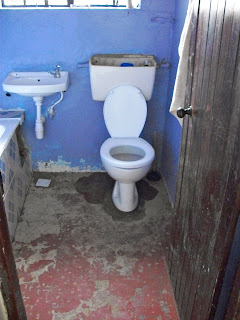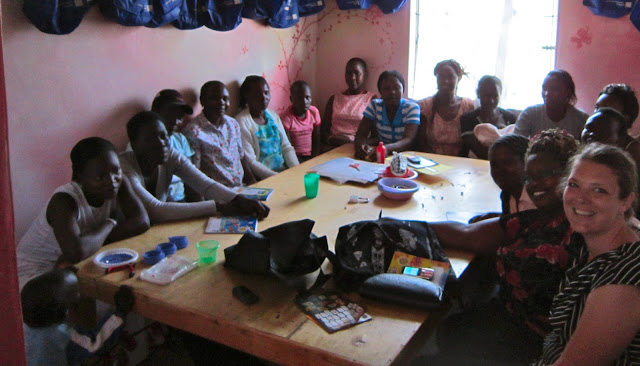Vision: The Pastoral Circle
Want a better understanding of what we do? Apologies for the length but it is a deeper dive. You may have seen the pictures, read our stories and social media posts where you get to know what we do on a practical level. This is the "why we do it the way we do."
The Pastoral Circle is our vision. Below is a document that we formed to lead us in what we do on the ground, equipping the local church. Incarnated work requires us to be present in the community but it also makes us (outsiders) recognize that we are usually not the most equipped to minister on the front line. Yes, we work on the front line but cross-culturally we have limitations. If we want to see a holistic transformation for the sake of the Gospel, our best role as Wazungus is to work alongside of the local church, focusing on discipleship. As we equip the church to reach marginalized poor communities this process helps us to make the right decisions and stay on mission. On a practical level, this transformation process has many faces and can even change daily, based on circumstances and need.
Colossians 1:19-20
19 For God in all his fullness was pleased to live in Christ,
20 and through him God reconciled everything to himself.
He made peace with everything in heaven and on earth
by means of Christ’s blood on the cross.
20 and through him God reconciled everything to himself.
He made peace with everything in heaven and on earth
by means of Christ’s blood on the cross.
2 Corinthians 5:18-20
18 And all of this is a gift from God, who brought us back to himself through Christ. And God has given us this task of reconciling people to him. 19 For God was in Christ, reconciling the world to himself, no longer counting people’s sins against them. And he gave us this wonderful message of reconciliation. 20 So we are Christ’s ambassadors; God is making his appeal through us. We speak for Christ when we plead, “Come back to God!”
Transformation can be defined as changed
people, changed relationships.
Four Phases
The
circle is split into four phases that help the church determine the appropriate
action and posture to take for community transformation while doing outreach
and to “position for discipleship.”
·
Presence
·
Relief
·
Restore
·
Develop
These
quadrants form the foundation for the rest of the circle.
The top half - Presence to Relief
When
a need arises, understanding the level of need helps to administer the proper
response. Our written “Benevolence
Policy” document guides and empowers us in making the right decisions.
Presence and relief, lead
to quick, short-term responses where care is relatively easy to administer. Relief is no longer needed when
individuals have the opportunity to partner with others and help themselves. After the crisis has been averted, it is
important to move quickly into “Restore” and “Develop.”
The bottom half - Restore to Develop
Rehabilitation and Development,
require much more time, effort
and a long-term commitment. These stages require the “helpers” to move into a
partnership role and allow the “helped” to participate and plan their own
recovery.
The Pastoral Circle –
the circle of praxis.
The
pastoral circle is at the heart of the work that happens. It is the pastoral response based on
transformational analysis and incarnation into the community. Through proper training and empowerment,
local pastors and the church can become the most equipped human resource to impact communities
by joining the social engagements with planting churches.
The
circle has four actions that a pastor is constantly working and reflecting on -
constantly adjusting to and from - being, doing, word and deed.
The pastor, while partnering with others, is focused on outreach -
positioning for discipleship.
·
Insertion
into context - Being
·
Social
analysis - Doing
·
Theological
reflection - Word
·
Action,
seeing a changed person - Deed
We've adapted it but it's not our original idea.
The
circle is adapted from a missionary strategy long used by the Catholic Church.
Knowing the history helps us to understand context. Years ago, due to variables such as - industrialization, the shift from an agrarian
to an urban capitalistic society, socialism and challenges to the papal states
- the church realized that the middle to upper class was no longer able to
relate to people with the growing levels of poverty in their community. It needed to adapt and reshape their strategy
if they were going to remain effective, and reach the people.
[1] Thus began the shift to a
pastoral response influenced by a distribution analysis. Priests, sisters, brothers and lay religious
professionals began a dramatic attempt to cross class lines and identify
themselves with the poor. Sometimes they worked in official ministerial roles,
sometimes simply in ministries of presence.
The poor welcomed the missionaries and responded to their ministerial
initiatives. The middle class church,
from which the missionaries came, also gained – learning of social worlds from
which it had previously been insulated.
The church began to develop new insights into the injustices of past and
present society…
The task of evangelization will not be finished until one
day a church is built that blends such professional ministers with indigenous
lay pastors. Ordained in the fullest
sense to preach the gospel and minister the sacraments. These lay pastors will probably include
married people, both men and women. Most
important, however, they may not be university or seminary graduates, but
community religious leaders guided by in-service training from religious
professionals. Such a rooted lay
ministry would mean a genuine transformation of current missionary strategy.
The
history here gives us principles that we can learn from. This circle
represents the frontlines of church planting and social engagements. If the church trains and partners with local and
lay pastors - the most equipped to work in the context (inner circle), and encourages
the church of the formal class to empower the work, it will move the church
towards growth and staying relative. If the
church on the ground focuses on discipleship through the social engagements it
cannot lose focus or be pulled off mission.
It has the greatest potential to reach many with the gospel.
In a
practical step, the church can empower
by preparing the inner circle church
pastors and their spouses through vocational training and job ideas. A job can greatly assist the pastor and/or
spouse with the mission; helping the church get to a place where it is able to
fully support the work of the pastor. In
most contexts, working within the marginalized poor communities, it is unlikely
that a pastor will ever be fully supported by their church’s giving. These pastors and their families will likely
rely on other incomes and vocations. We
can envision formal sector congregations to help plant churches by hiring
pastors and/or their spouses.
But thanks be to God, who in Christ always leads us in triumphal
procession, and through us spreads the fragrance of the knowledge of him
everywhere. For we are the aroma of Christ to God among
those who are being saved and among those who are perishing.
2 Corinthians
2:14-15
The Application Track
The
application track guides the church laity to move into the context and get
involved, take action. The church is
active in the pastoral circle but in
more of a support, coming along side, empowerment, participant role.
The church responds and empowers with
the activity in the pastoral circle.
·
Positioning
for Discipleship - Reaching Marginalized Brokenness
The church must be present to be relevant and
understand the context of poverty mentality. Being present and available here
means that the church can be committed to the recruiting, training and
empowering of pastors and social development work that go to the front line
community – the pastoral circle. Empowering through church planting classes
that include social development training, hosting seminars for business
start-up training, encouraging lay people who are passionate about social
engagements and have a desire to do something about it – “Fighting the Giants”,
sending and supporting pastors and missionaries to go (this likely will not be
done in the traditional way). Recruiting
an internal church staff and leadership team experienced in social development
to lead the ministry teams.
·
Benevolent
Care
Urgent and temporary
provision of emergency aid, relief in a time of crisis. This care is facilitated through a benevolence
department and networking with each pastor ministering and residing in the
communities of the helped. The goal is
to move quickly into “Rehabilitation.” If people can help themselves, then our
care no longer becomes relief. Instead
we risk creating unhealthy dependence.
Don’t do something for someone that they can do for themselves.
We need to be prepared that for many individuals who come to the
middle/upper class church for benevolent care most likely will not find this
church as their home. They will likely
feel more understood by their resident pastor who speaks their heart language (local or tribal
language). We rely on the pastor to
assist us in addressing these benevolence cases through his congregation,
assisting with the costs of administering care and even the follow-up. The pastor’s interest is that the helped
person will likely soon become their church member and discipleship will be
allowed to continue on. This system can
also help minimize dependence as it creates accountability on a few levels.
Thinking discipleship - Invitations into discipleship
·
Presence
allows the church to position for discipleship and seeks ways to invite others
into a relationship.
·
In relief
the church positions to answers the question, “Who is God?” This is an appropriate time to invite someone
into community where they can receive holistic care and join in a Bible study.
·
Giving
Short-term Access by participation
Partnership begins through access
and opening doors to assist in the short-term care. The laity of the church is involved in
helping in the benevolent care i.e. food bank, medical care, intervention in
abuse, children’s services, moving towards rehabilitation. This will require
for the church to network and partner with local organizations and government
agencies who are leaders and authorities in administering the care and relief
work. This is a great way for “small
group” ministries to immerse themselves in the work.
·
Giving
Long-term Access
With the help of the mapping tool, the church can continue to assist in
providing access, partnering with other organizations and empowering
communities to move from the informal to the formal sectors of society. These engagements would reflect a longer
commitment and require a rehabilitation approach.
·
Multiplication
- Reflecting Wholeness
When there is a
visible outward focus on others and their community, the church continues and
multiplies through the journey of transformation. A pastor will have a plan of action focused
on outreach and positioning for discipleship. The church reaches others to share
in the story. Disciples make disciples.
There is a greater
focus on development. The goal would be to help a community to
increase the assets or capitol[2]
and to protect or mitigate against the things that would undermine them.
Thinking discipleship – Abiding in Christ
·
A
key factor for restoration is engaging
individuals with a community of faith, the church. The focus is on building relationships and
maturing in Christ, bringing the Kingdom of God to a broken world.
·
Multiplication occurs when we disciple others
to make disciples of Jesus. Individuals now carry a visible transformation with
outward focus on others and their community.


